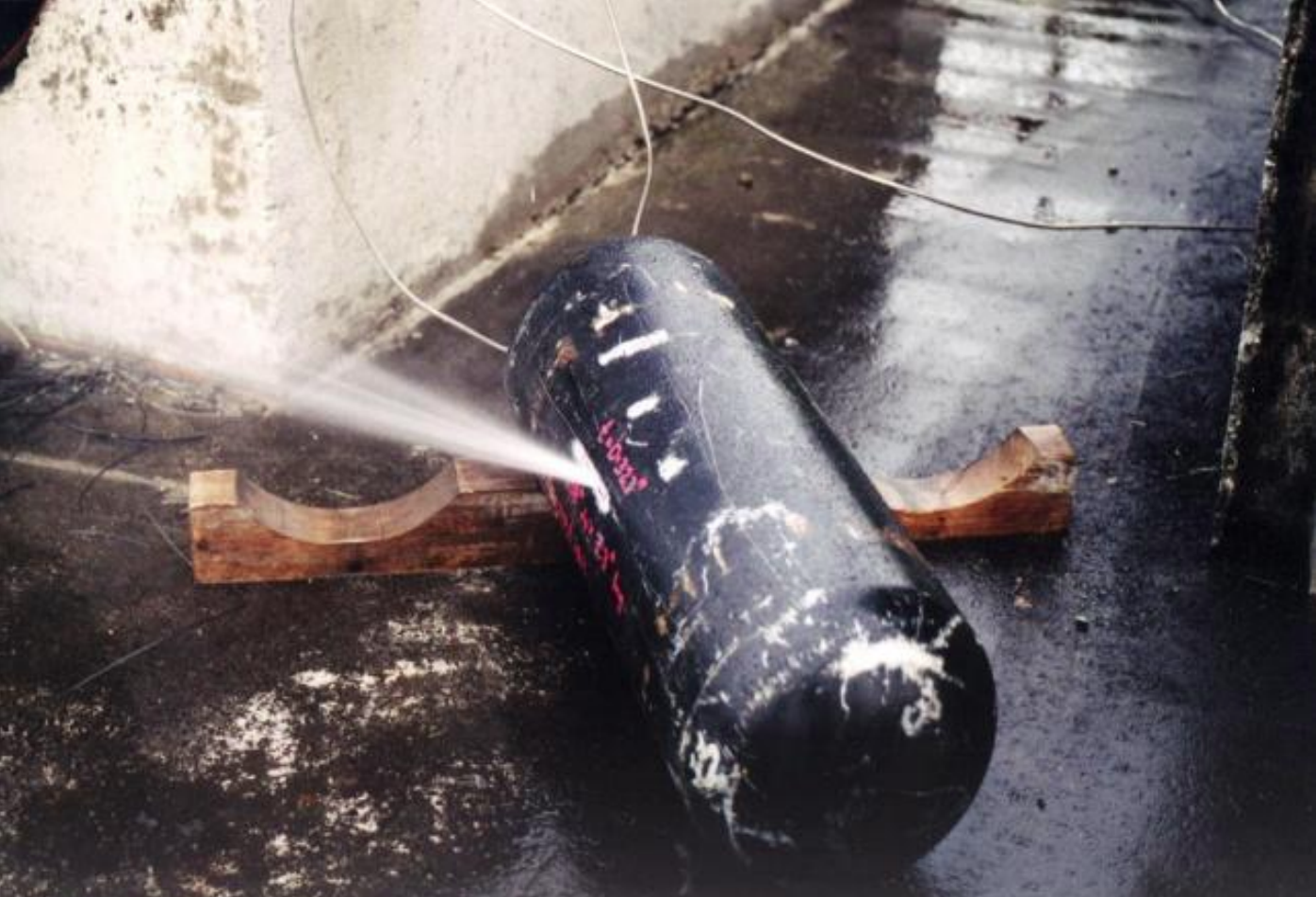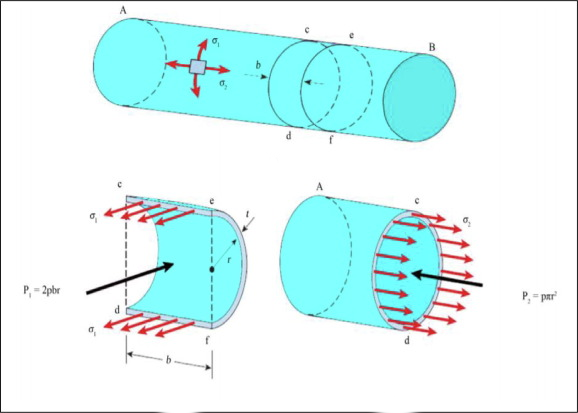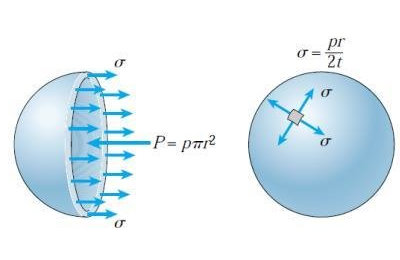Guides

Leak Before Burst
Since a composite pressure vessel (CPV) typically stores gas at high pressure, the design of the vessel structure needs to be treated as fracture critical. This means that the design calculations and tests need to verify that the vessel will not fail cata...

Netting Analysis of CPVs
In the cylindrical section of a closed-end pressure vessel, the hoop or the circumferential stress is twice that of the axial stress. If a homogeneous material with isotropic properties is used to fabricate a pressure vessel, the material properties are effectively under-utilized in the axial direction. The...

Why Carbon Fiber?
Consider a spherical vessel made out of isotropic material with strength $\sigma_u$ <img title="" src="https://cpvdesign.com/static/img/spherical_vessel.png" alt="" width="389" data-align="center"> <br></br> Wall thickness of the spherical pressure vessel is calculated from, $$ t = \frac{pR}{2\sigma_u} $$ Mass of the spherical shell, $$ M = 4\pi R^2 t \rho $$ Internal volume of the